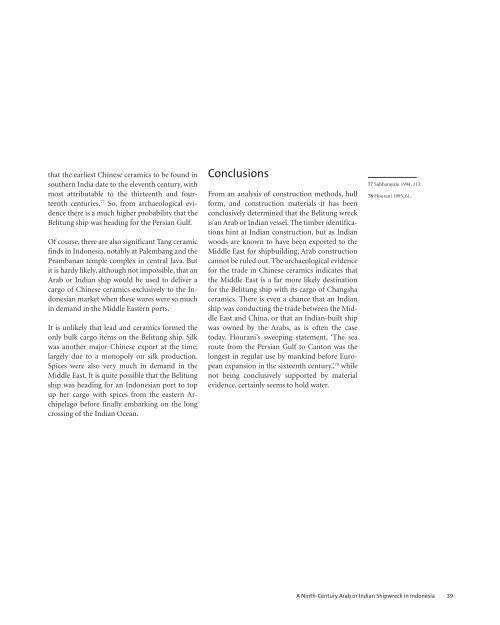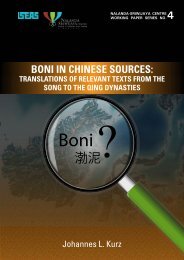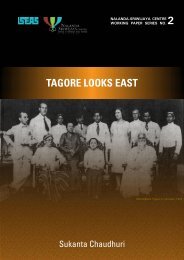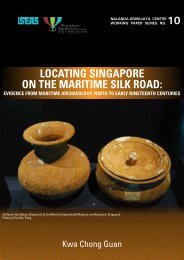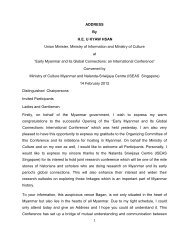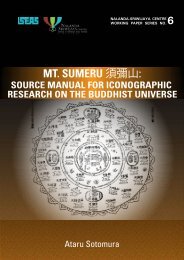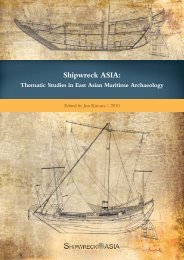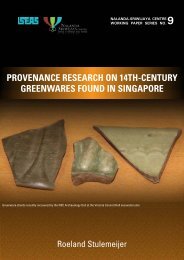Create successful ePaper yourself
Turn your PDF publications into a flip-book with our unique Google optimized e-Paper software.
that the earliest Chinese ceramics to be found in<br />
southern India date to the eleventh century, with<br />
most attributable to the thirteenth and fourteenth<br />
centuries. 77 So, from archaeological evidence<br />
there is a much higher probability that the<br />
Belitung ship was heading for the Persian Gulf.<br />
Of course, there are also significant Tang ceramic<br />
finds in Indonesia, notably at Palembang and the<br />
Prambanan temple complex in central Java. But<br />
it is hardy likely, although not impossible, that an<br />
Arab or Indian ship would be used to deliver a<br />
cargo of Chinese ceramics exclusively to the Indonesian<br />
market when these wares were so much<br />
in demand in the Middle Eastern ports.<br />
It is unlikely that lead and ceramics formed the<br />
only bulk cargo items on the Belitung ship. Silk<br />
was another major Chinese export at the time,<br />
largely due to a monopoly on silk production.<br />
Spices were also very much in demand in the<br />
Middle East. It is quite possible that the Belitung<br />
ship was heading for an Indonesian port to top<br />
up her cargo with spices from the eastern Archipelago<br />
before finally embarking on the long<br />
crossing of the Indian Ocean.<br />
Conclusions<br />
From an analysis of construction methods, hull<br />
form, and construction materials it has been<br />
conclusively determined that the Belitung wreck<br />
is an Arab or Indian vessel. The timber identifications<br />
hint at Indian construction, but as Indian<br />
woods are known to have been exported to the<br />
Middle East for shipbuilding, Arab construction<br />
cannot be ruled out. The archaeological evidence<br />
for the trade in Chinese ceramics indicates that<br />
the Middle East is a far more likely destination<br />
for the Belitung ship with its cargo of Changsha<br />
ceramics. There is even a chance that an Indian<br />
ship was conducting the trade between the Middle<br />
East and China, or that an Indian-built ship<br />
was owned by the Arabs, as is often the case<br />
today. Hourani’s sweeping statement, ‘The sea<br />
route from the Persian Gulf to Canton was the<br />
longest in regular use by mankind before European<br />
expansion in the sixteenth century.’, 78 while<br />
not being conclusively supported by material<br />
evidence, certainly seems to hold water.<br />
77 Subbarayalu 1994, 113.<br />
78 Hourani 1995, 61.<br />
A Ninth-Century Arab or Indian Shipwreck in Indonesia 39


